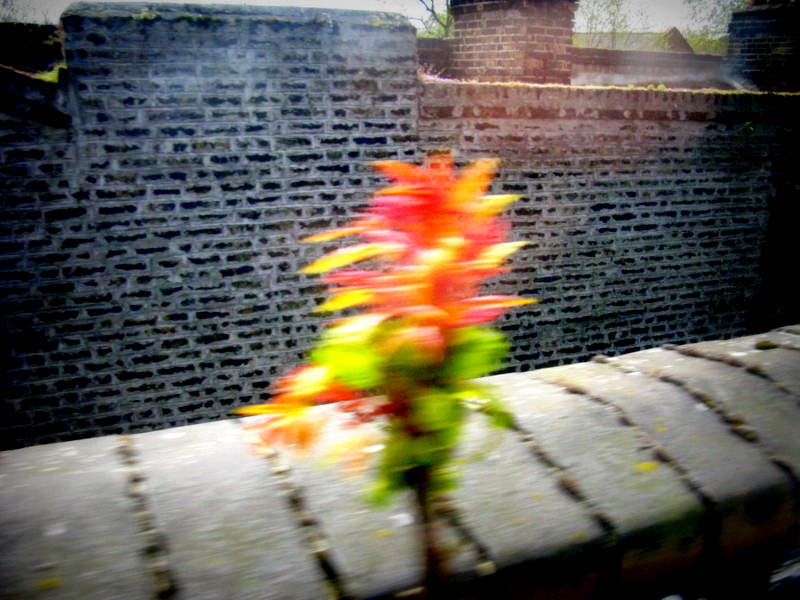 |
| Matthew Brewer doing Tai Chi Photo: Daoist Internal Arts |
To do Tai Chi is to
open up space in our body.”
Dr. Matthew
Brewer is a teacher of Neigung, a traditional Chinese energy practice which
pre-dates and informs Tai Chi as we know it today. (He is also my teacher). Listen in to Part One of our conversation, as Matthew talks about the importance of space within the body and how it links with our health and vitality.
Rachelle (RAS) -What is space in Neigung,
because I believe in Chinese traditional medicine, space is considered a
bonafide element alongside water, fire, wind and so forth.
Matthew Brewer (MB) – No, that’s Hindu thought – Indians recognise
Akasha (space) as the fifth element. For the Chinese it’s earth. Earth element
has the same function as space in the Hindu system. Earth contains everything.
It holds everything.
RAS – Including space?!
MB – Well…earth is the
ground…unless you have a place to work from, you can’t do anything. In other
words, without earth you have no place. From that point of view, there is space
relative to the fact that there is earth.
RAS – But in your practice there
are teachings about space inside-the-body! I recall your speaking about the
spaces between our internal organs, or inside our joints. That isn’t something
we normally think of - because space is usually perceived as being outside!
Right?
MB- Really?
RAS – Well you’re used to
thinking that way, Matthew, because for you it’s a way of being….
MB – Well, yes. From a Daoist* point of view, there’s as much inner space as there is outer space. So, say with
meditation, your awareness can travel a very very long way out. There is a practice in Daoism where you extend
your awareness beyond the Moon, beyond the Sun, beyond the solar system, Beyond
the stars. But at the same time you’ re travelling the same distance inwards,
deeper and deeper. The space we’re talking about here is more equal to
spirit.
RAS- Is that like the Unconscious,
in psychological terminology?
MB- Well if you’re speaking of
the unconscious, you’re talking about level of mind. And within traditional
(Chinese) systems, mind is important - but it’s not the end.
RAS- So that means space is
different from mind?
MB – Not true mind, but what we
think of as mind. Most psychologists play with the emotions, you know: “how do you
feel, what do you think, “ all that
stuff. That’s not yet True Mind.
RAS – Is it like in Japanese when they say “Kokoro” which is the word meaning ‘Heart/Mind’?
 |
| Kokoro or Shin Calligraphy by netnejpcalligraphy |
MB- That’s Shin in Chinese. Yes,
the Heart-Mind is what you really are. From the western point of view we’d talk
about soul. Shin and soul – well I don’t
really want to equate them but they are in the same sort of territory.
RAS- Is this the
space we strive for in Tai Chi?
MB – Well the mind is a way into
that inner space, if you like.
RAS – But how does that link with
to your talks about spaces between the joints….
MB – Well, at first you’re just
talking physically…
RAS – Yes, but it’s actually
reality because I’ve seen your demonstrations and have personally felt those
internal spaces that you speak about.. I can attest that it’s real.
MB- Yes, that’s physical space.
So, the difference between a joint that hurts and a joint that doesn’t hurt, is
space.
RAS- Really!
MB- Yes. For instance you’ve got
a bad hip, like the people who need a hip replacement, they’ve lost space so
that the ball and socket are rubbing against each other.
RAS- Right, but that comes with
normal wear and tear…
MB – Why does it wear and tear?
Because something is pressing on something else. It wouldn’t wear and tear if
it wasn’t rubbing on something. How do you stop a joint from rubbing on
something else? You maintain the space in it. You make space in the joint, the
joint fills with fluid –because the inside linings of the joint ‘leak’ oil, if
you like, the Synovial Fluid keeps the joint alive. So you need space to let
the liquid in to cushion the joint.
RAS. So if the joint is worn down
and rubbing, are you able to intentionally open it back up again?
MB – Sure!
RAS- My goodness….really! Well I
suppose that’s why chronic pain sufferers get sent to you by the NHS The practice helps them on a practical, real level.
MB – Yes. Another example...slipped discs are the same. The vertabrae
are too close, so it pushes the disc out. How do you unslip the disc? You open
up the space and the disc goes back in.
To be continued
*Note: I am using the modern Chinese transliteration of the word 'Taoist', in keeping with Dr. Brewer's usage of the word, Please see his website ' Daoist Internal Arts' for a more detailed explanation..
Calligraphy Illustration : http://www015uppso-netnejpcalligraphy.blogspot.co.uk/2009/10/heart-japanese-calligraphy.html




